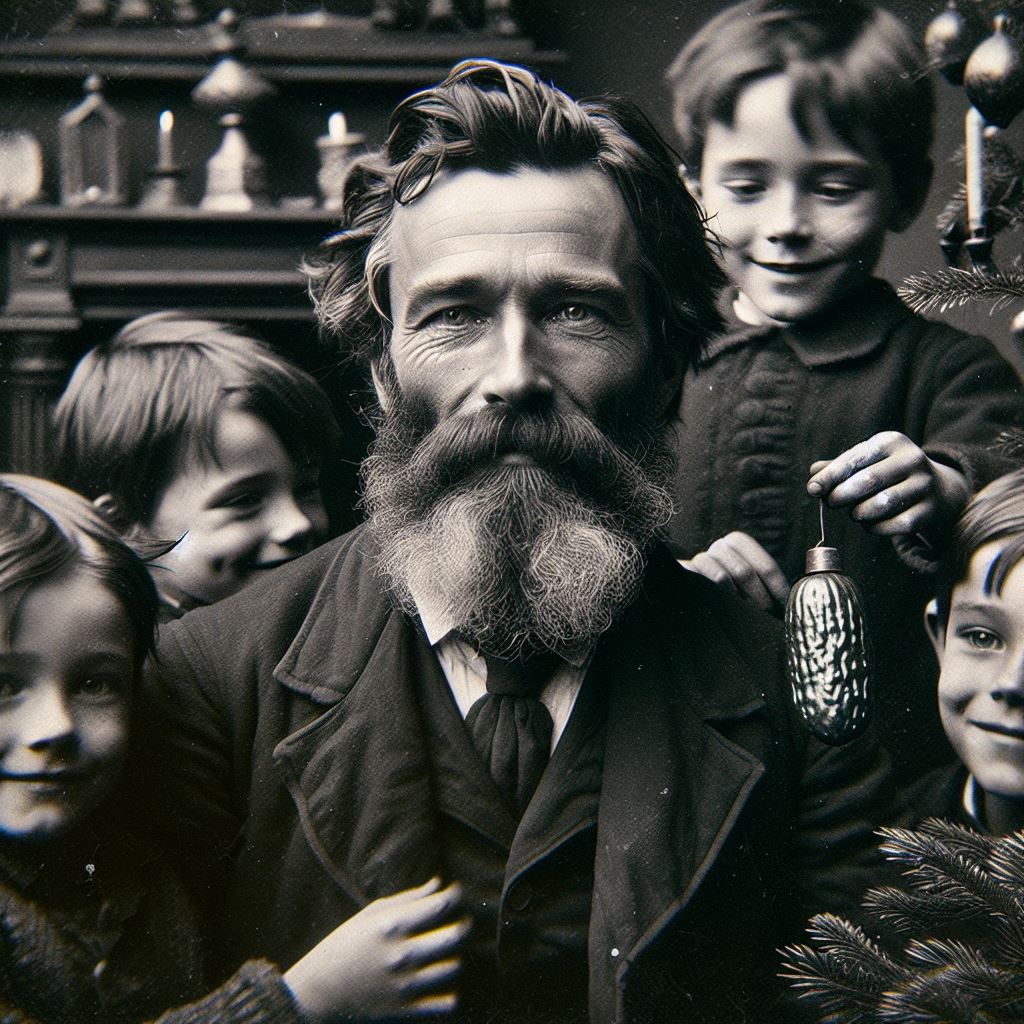The Heartwarming Tale of the German Christmas Pickle: A Symbol of Hope, Faith, and Gratitude
GERMAN HERITAGE USA | AFFILIATE DISCLAIMER: This post may or may not contain affiliate links which means we may receive a commission for purchases made through links. We will only recommend products that we have personally used or that we truly trust. Learn more on our Private Policy and Disclaimer Page located under our Terms Of Service tab above.
This blog article was selected to be produced as an AUDIO BLOG as well. Simply CLICK the link below to view. Enjoy!
Portions of our videos and blog post may or may not contain image, video and audio elements of A.I. (artificial intelligence) enhancement for interpretation, rendition and entertainment purposes.
In the midst of the American Civil War, amidst the chaos and strife that characterized the era, a heartwarming tradition emerged—one that continues to grace Christmas trees with its enduring charm: the German Christmas Pickle.
This distinctive Christmas Pickle Ornament is quite inspirational when you know the whole story. It’s a narrative of hope, faith, and gratitude, that draws its inspiration from the unlikely setting from the dire conditions of Andersonville, Georgia during the American Civil War.

The Inspirational Origin:
Our journey into the heart of this heartwarming tradition begins with the life of John C. Lower, a Bavarian-born soldier who fought on the side of the Federal Union forces during the Civil War and served as his unit’s quartermaster.

Captured in the year 1864, Lower found himself facing the harsh and deplorable conditions of Andersonville Prison, notorious for its overcrowded and unsanitary environment. However, it was on a poignant Christmas Eve within these confines that Lower’s life took an unexpected and hopeful turn.

Legend has it that a compassionate guard, moved by Lower’s plight, offered him a simple yet profound gift—a pickle, halfway eaten already but still a grateful token in humanity. Miraculously, this humble pickle became a source of rejuvenation for the ailing soldier, breathing a spirit of resilience and hope into his weary soul.
Following the war, upon his return to Germany, you’ll learn that Lower carried this poignant memory with him, and through a series of regional travels, random meetings, and humble ideas, John C. Lower eventually established a heartwarming family tradition of hanging a pickle ornament on his Christmas tree each year.
In remembrance of the humanity of his captivity during the Civil War, Lower inspirationally began the family tradition of hiding a pickle ornament in his Christmas tree each year.
It was the last ornament added to the tree and inserted deep into the branches making it difficult to find. After the last gift was opened, it was time for everyone present, mainly children to search for the well-hidden German Christmas Pickle.
Who ever found it was awarded an additional small gift, or the promise of good fortune for the upcoming year.
A Twist of Fate:
As Lower’s life unfolded post-war, a twist of fate led him to settle in Bamberg, a picturesque town near Lauscha, Germany renowned for its exquisite glass ornaments. This coincidence adds a layer of serendipity to the tale, as Lower’s journey aligns with the burgeoning popularity of German glass ornaments in the United States during the 1890s.
Woolworth’s Role in Popularizing German Ornaments:
The importation of German Christmas ornaments to the United States underwent a transformative phase, thanks to the visionary Frank Winfield Woolworth, founder of F. W. Woolworth stores. Captivated by the quality and variety of German decorations, Woolworth initiated their importation in the 1870s. The success of Woolworth’s ornaments not only adorned American homes but also contributed significantly to the widespread celebration of Christmas across the nation.
Lauscha: The Birthplace of Christmas Ornaments:
The pivotal decades of the 1860s to 1890s saw the town of Lauscha in Thuringia, Germany, emerge as the epicenter of Christmas ornament production. The innovative glassblower Hans Greiner revolutionized the industry by developing thin-walled glass ornaments. This groundbreaking advancement triggered a surge in production, establishing Lauscha as a global exporter of Christmas decorations by the 1870s.
Andersonville: A Place of Suffering and Resilience:
Against the backdrop of history, Andersonville Prison stands as a tragic symbol of suffering during the American Civil War. Established in February 1864, the Confederate prisoner-of-war camp designed for 10,000 prisoners was quickly overwhelmed, holding over 33,000 by August 1864. The conditions were deplorable—overcrowded, unsanitary, and plagued by disease. Despite this grim reality, Lower’s tale of resilience and gratitude blossomed in the heart of this tragedy.
Conclusion:
The German Christmas Pickle, a humble ornament with a rich history, finds its roots in the experiences of a Bavarian soldier on foreign soil. As we hang this symbolic pickle on our Christmas trees, let us take a moment to reflect on the inspirational story of John C. Lower. In the gentle glow of twinkling lights, the pickle transcends its role as mere decoration—it becomes a cherished symbol of hope, faith, and gratitude. Lower’s story reminds us that the human spirit can triumph over adversity, and stories born in distant lands can transcend borders and time.

Postscript:
After the war, Lower returned to Germany and settled in the town of Bamberg, where he worked as a blacksmith until his passing in 1923 at the age of 81.
Traveling east of Frankfurt, Germany lies the township of Bamberg Germany. If you take a short journey north of Bamberg for 57 miles, you will soon arrive in Lauscha, Germany where today the Museum of Glass Art stands as a testament to the town’s rich history in Christmas ornaments and other fine pieces.
In the National Archives, a search for soldiers named John C. Lower from the American Civil War yields seven individuals. Two hailed from Pennsylvania—one succumbed to pneumonia in 1862, while the other, a surviving POW, was interned in Andersonville, Georgia.

Andersonville Prison, officially known as Camp Sumter, stands as a somber reminder of the largest and deadliest Confederate prison camp during the American Civil War. Established in 1917, the Andersonville National Historic Site commemorates the site with the remains of the prison, a museum, and a cemetery.

